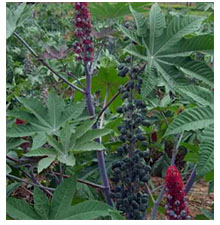
Biomass is a generic term that refers to the amount of living matter produced by plants, animals, fungi or bacteria in a given area. Usually used to refer to the fuel energy obtained directly or indirectly from these biological resources. It is a potentially renewable resource. The sun is the original source of energy for the growing biomass vegetation and the plants store the energy.
Biomass as a source for renewable energy production can be classified as:
- Natural Biomass: occurs spontaneously in nature.
- Dry Residual Biomass: drawn from the resources generated in agriculture, forestry and agro-business.
- Wet Residual Biomass: comes from biodegradable wastewater.
- Energy Crops: are those that are dedicated to producing non-food biomass.
The transformation of biomass into energy uses several methods including:
- Thermochemical Method: based on the use of heat as a source of biomass conversion generally developed for dry biomass.
- Biological Method: based on the use of various types of microorganisms to break down molecules into simpler compounds of dense high energy density generally suitable for wet biomass.
Energy applications – The transformation of biomass can lead to different energies including:
- Thermal Energy: from water or hot air steam. It is the most widespread application of natural and residual biomass.
- Electricity: Obtained from the conversion of biomass from energy crops, primary forest biomass, and waste industries.
- Mechanical Energy: biofuels are fully or partially a substitute for fossil fuels, enabling energy for gasoline and diesel engine with the use of bio-alcohols and bio-oils.
The method used to convert biomass into energy depends largely on the type of biomass being treated, and the end use for the energy. There are commercial systems on the market to utilize wet and dry residual biomass.





